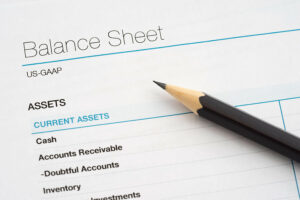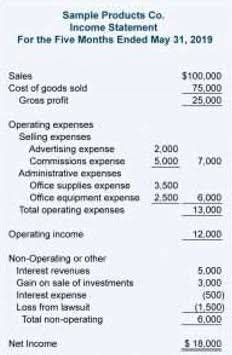How Much Does it Cost to Outsource Bookkeeping?
November 27, 2019Current Assets: Accounts Receivable
December 4, 2019Content

You can email the site owner to let them know you were blocked. Please include what you were doing when this page came up and the Cloudflare Ray ID found at the bottom of this page. Tim is a Certified QuickBooks Time Pro, QuickBooks ProAdvisor, and CPA with 25 years of experience. He brings his expertise to Fit Small Business’s accounting content. Get up and running with free payroll setup, and enjoy free expert support. Try our payroll software in a free, no-obligation 30-day trial. Think of owner’s equity in the context of owning a house.

Your balance sheet provides a snapshot of your practice’s financial status at a particular point in time. This financial statement details your assets, liabilities and equity, as of a particular date. Although a balance sheet can coincide with any date, it is usually prepared at the end of a reporting period, such as a month, quarter or year. Expense and income accounts would also have to be analyzed as they help accountants determine net profit or a net loss.
What is the accounting formula?
Found on the left side of the balance sheet, assets are listed from top to bottom in the order of their liquidity. Liquidity is the ease with which they can be converted into cash.
- A company’s financial risk increases when liabilities fund assets.
- A company can calculate its owner’s equity by deducting its liabilities from its assets.
- Add those business transactions in T accounts and calculate closing balances.
- Maybe you had a bad quarter and missed your revenue goals.
- The accounting equation is fundamental to the double-entry bookkeeping practice.
- Market value is the current price, which investors look at to predict its future value.
On the left are assets, the value of what the business owns. On the right are liabilities (what’s owed by the business) and owner’s equity (what’s left). Owner’s equity changes based on different activities of the business. It increases with increases in ownercapital contributions,or increases in profits of the business.
How Owner’s Equity Gets Into and Out of a Business
If you were to sell all your assets and pay off your liabilities, the owner’s equity would be what’s left. It shows retained earnings and, if the company is publicly traded, common stock information.
Similarly, for partnerships and private limited companies, it may be the cumulative investments by all partners plus net income. Instead, all net income and losses are https://www.bookstime.com/ directly added to the capital balance of the owner. However, the amount credited to the partner’s capital account is only equivalent to their profit sharing ratio.
Components of the Balance Sheet and What They Can Tell Us
Thus, the accounting formula essentially shows that what the firm owns has been purchased with equity and/or liabilities. A balance sheet provides a snapshot of a company’s financial situation at a particular time, typically at the end of a quarter or year. This document presents itemized lists of the assets = liabilities + equity company’s assets and liabilities. By subtracting the total liabilities from the total assets, the company can calculate the owner’s equity. The owner’s equity shows the available capital that the owner could claim if all assets were sold and all liabilities were paid at that particular date and time.
- The asset, liability, and shareholders’ equity portions of the accounting equation are explained further below, noting the different accounts that may be included in each one.
- This article shows you how to read and make a balance sheet.
- If the Cash basis accounting method is used, the revenue is not realized until the invoice is paid.
- The dividend rate can be fixed or floating depending upon the terms of the issue.
- Toward the bottom of the asset list are Property, Plant, and Equipment.
- The number of outstanding shares is taken into account when assessing the value of shareholder’s equity.
Assets are a company’s resources — the items bought, created, and owned by the company. As the initial cash capital runs out and the company incurs more expenses, it may need loans or lines of credit. Liabilities are financial obligations or debts that a company owes to a bank or creditor. The total number of assets and liabilities will vary from time to time throughout the company’s lifespan.
Expanded accounting equation
As we can see, the assets of $7,500 are equality to the liabilities and equity of $7,500. Add those business transactions in T accounts and calculate closing balances. T Accounts are informal financial records used by a company as part of the double-entry bookkeeping process. For every transaction, at least two classes of accounts are impacted. Non-Current assets are those assets that have a validity of more than a year. Land, buildings, fixtures & fittings, equipment, machinery all are classified as non-current assets.
Is rent an asset?
Rent Expense Under the Accrual Basis of Accounting
Under the accrual basis of accounting, if rent is paid in advance (which is frequently the case), it is initially recorded as an asset in the prepaid expenses account, and is then recognized as an expense in the period in which the business occupies the space.
Tangible assets are physical objects that can be touched, like vehicles. Intangible assets are resources that have no physical presence, though they still have financial value. Fixed assets are physical items that last over a year and have financial value to a company, such as computer equipment and tools. Owner’s equity isn’t the same thing as the actual market value of a business. Subtracting the liabilities from the assets shows that Apple shareholders have equity of $65.4 billion. Finally, it’s important to note that owner’s equity is different from an owner’s draw, which refers to money that is actually paid to the owner of a business.

